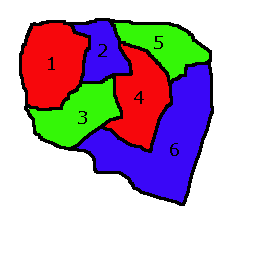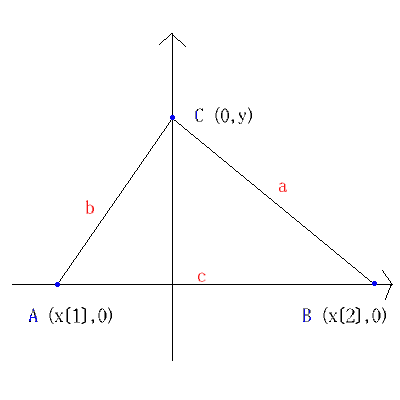![[CoCoA logo]](../gif/CoCoALogo-small.png)
Home Page
Computations in Commutative Algebra
[En] What is CoCoA?




























![[CoCoA logo]](../gif/CoCoALogo-small.png) Home Page |
CoCoA System
Computations in Commutative Algebra [En] What is CoCoA? |
                           
|
2^32-1;
4294967295
2^64-1;
18446744073709551615
(1/3) * 3;
1
0.3333333333333 * 3;
9999999999999/10000000000000
(x-y)^2 * (x^4-4*z^4) / (x^2+2*z^2);
x^4 -2*x^3*y +x^2*y^2 -2*x^2*z^2 +4*x*y*z^2 -2*y^2*z^2
Factor(x^4 -2*x^3*y +x^2*y^2 -2*x^2*z^2 +4*x*y*z^2 -2*y^2*z^2);
record[ RemainingFactor := 1, factors := [x^2 -2*z^2, x -y], multiplicities := [1, 2]] ]
f = c as the polynomial f -
c. CoCoA can also solve polynomial systems, but this is a
bit more difficult and we'll see it later. Now we solve
| x-y+z | =2 |
| 3x-z | =-6 |
| x+y | =1 |
System := ideal(x-y+z-2, 3*x-z+6, x+y-1); ReducedGBasis(System);
[x +3/5, y -8/5, z -21/5][En] Hence the solution is (z=21/5, x=-3/5, y=8/5)
| 3x - 4y + 7z | =2 |
| 2x - 2y + 5z | =10 |
M := mat([[3, -4, 7, -2], [2, -2, 5, -10]]); H := HilbertBasisKer(M); L := [h In H | h[4] <= 1]; L;
[[0, 10, 6, 1], [6, 11, 4, 1], [12, 12, 2, 1], [18, 13, 0, 1]][En] The interpretation is that there are just four solutions: (0, 10, 6), (6, 11, 4), (12, 12, 2), (18, 13, 0).
use ZZ/(2)[a,b,c]; I1 := ideal(a, b-1); I2 := ideal(a-1, b); A := intersect(I1, I2); I3 := ideal(b, c-1); I4 := ideal(b-1, c); B := intersect(I3, I4); I5 := ideal(a, b, c-1); I6 := ideal(b-1, a, c); I7 := ideal(b, a-1, c); I8 := ideal(b-1, a-1, c); C := IntersectList([I5, I6, I7, I8]); ReducedGBasis(A + B + C);
[b +1, a, c][En] The unique solution is that A and C were lying, and B was telling the truth.

use P ::= ZZ/(3)[x[1..6]];
define F(X) return X*(X-1)*(X+1); enddefine;
VerticesEq := [ F(x[i]) | i in 1..6 ];
edges := [[1,2],[1,3], [2,3],[2,4],[2,5], [3,4],[3,6],
[4,5],[4,6], [5,6]];
EdgesEq := [ (F(x[edge[1]])-F(x[edge[2]]))/(x[edge[1]]-x[edge[2]])
| edge in edges ];
I := ideal(VerticesEq) + ideal(EdgesEq) + ideal(x[1]-1, x[2]);
ReducedGBasis(I);
[x[2], x[1] -1, x[3] +1, x[4] -1, x[6], x[5] +1][En] The interpretation is that there is indeed a colouring in this case. For instance, if 0 means blue, 1 means red, and -1 means green, we get [country 1 = red; country 2 = blue; country 3 = green; country 4 = red; country 5 = green; country 6 = blue]


use QQ[x[1..2],y,a,b,c,s];
A := [x[1], 0];
B := [x[2], 0];
C := [ 0, y];
Hp := ideal(a^2 - (x[2]^2+y^2), b^2 - (x[1]^2+y^2),
c - (x[2]-x[1]), 2*s - c*y);
E := elim(x[1]..y, Hp);
f := monic(gens(E)[1]);
f;
a^4 -2*a^2*b^2 +b^4 -2*a^2*c^2 -2*b^2*c^2 +c^4 +16*s^2
factor(f - 16*s^2);
record[ RemainingFactor := 1, factors := [a +b -c, a -b +c, a +b +c, a -b -c], multiplicities := [1, 1, 1, 1] ][En] The interpretation is that we have
Last Update: 20 November 2018